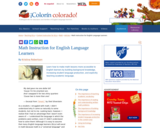
Learn how to make math lessons more accessible to English learners by building background knowledge, increasing student language production, and explicitly teaching academic language.
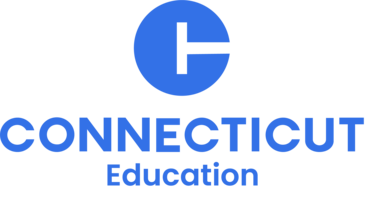

Learn how to make math lessons more accessible to English learners by building background knowledge, increasing student language production, and explicitly teaching academic language.
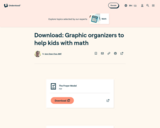
Download: Graphic organizers to help kids with math
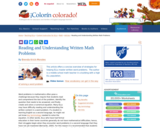
This article offers a concise overview of strategies for helping ELLs master written word problems. The author is a middle school math teacher in a building with a high ELL population.

Redefining Approaches for Engaging English Learners With Mathematical Ideas
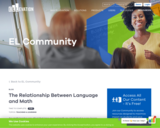
Any math teacher can attest that language and math are intertwined in every lesson: from the verbal instruction to teach a concept to comprehending a word problem to verbalizing how the student got their answer. For these reasons, math class can be a major point of frustration for students learning English. Equally frustrated are the educators who recognize the difficulty these language barriers present, but struggle to find strategies to reconcile it. » Read more at https://ellevationeducation.com/language-math-unpacking-relationship
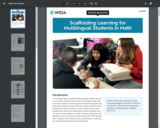
It was midyear at an International Baccalaureate middle school in
St. Louis Park, Minnesota, and students in the eighth-grade math
class were working on matching three forms that represented the
same linear relationship. Each of the 33 students received a card,
and their goal was to find the two other students whose cards
contained the same linear relationship. The learning target was “I
can express linear equations in slope-intercept, point-slope, and
standard forms, and convert between these forms” (MN Standard
8.2.4). Students were pointing, drawing, questioning, considering,
and making decisions about linear relationships
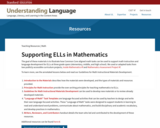
The goal of these materials is to illustrate how Common Core aligned math tasks can be used to support math instruction and language development for ELLs at three grade spans (elementary, middle, and high school). We used or adapted tasks from two publicly accessible curriculum projects, Inside Mathematics and Mathematics Assessment Project.
To learn more, see the annotated lessons below and read our Guidelines for Math Instructional Materials Development.
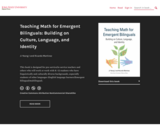
This book is designed for pre-service/in-service teachers and others who will work or work with K–12 students who have linguistically and culturally diverse backgrounds, especially students of other languages (English language learners/Emergent bilingual/multilingual).
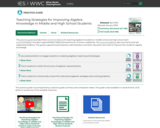
This practice guide provides three recommendations for teaching algebra to students in middle school and high school. Each recommendation includes implementation steps and solutions for common roadblocks. The recommendations also summarize and rate supporting evidence. This guide is geared toward teachers, administrators, and other educators who want to improve their students’ algebra knowledge.
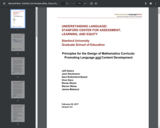
Principles for the Design of Mathematics Curricula:
Promoting Language and Content Development